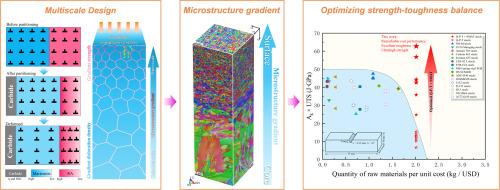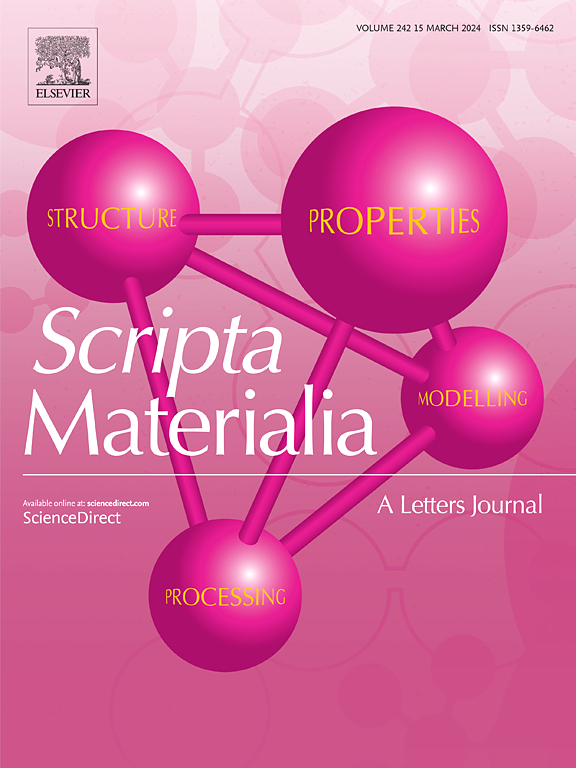通过多尺度设计提高Q-P-T素钢的冲击韧性:解决强度-韧性平衡问题
IF 5.6
2区 材料科学
Q2 MATERIALS SCIENCE, MULTIDISCIPLINARY
引用次数: 0
摘要
钢的冲击韧性对结构在动载荷作用下的应用至关重要。当前的钢铁发展趋势强调提高经济高效的普通钢的强度和韧性,解决固有的强度-韧性平衡。在此,我们提出了一种新的多尺度设计,以显着提高调质平型钢的冲击韧性。利用马氏体/奥氏体界面的位错效应,将残余奥氏体含量优化至10%左右,在保持优异延展性的同时,显著降低了脆性应变孪晶马氏体的含量。此外,表面机械磨损处理在试样表面产生残余压应力,并伴有微观结构梯度,提高了冲击过程中的能量吸收。该策略使冲击韧性提高了四倍,解决了强度-韧性平衡问题。该方法不仅展示了基于压应力梯度和微观结构梯度的多尺度设计在优化钢材性能方面的潜力,而且为高性能材料在动态加载应用中提供了一种可扩展的、经济有效的解决方案。本文章由计算机程序翻译,如有差异,请以英文原文为准。

Enhancing impact toughness of Q-P-T plain steels via multiscale design: Resolving the strength-toughness balance
The impact toughness of steel is crucial for structural applications under dynamic loading. Current steel development trends emphasize enhancing both strength and toughness in cost-effective plain steels, resolving the inherent strength-toughness balance. Here, we propose a novel multiscale design to significantly improve the impact toughness of quenching-partitioning-tempering plain steel. By leveraging the dislocation across martensite/austenite interface effect, we optimize the retained austenite content to approximately 10 %, evidently reduce brittle strain-induced twinned martensite while maintaining exceptional ductility. Furthermore, surface mechanical attrition treatment induces a residual compressive stress in sample surface accompanying with microstructure gradient and improving energy absorption during impact. This strategy achieves a fourfold increase in impact toughness, resolving the strength-toughness balance. The approach not only demonstrates the potential of multiscale design on compressive stress gradient accompanying microstructure gradient to optimize steel performance but also provides a scalable, cost-effective solution for high-performance materials in dynamic loading application.
求助全文
通过发布文献求助,成功后即可免费获取论文全文。
去求助
来源期刊

Scripta Materialia
工程技术-材料科学:综合
CiteScore
11.40
自引率
5.00%
发文量
581
审稿时长
34 days
期刊介绍:
Scripta Materialia is a LETTERS journal of Acta Materialia, providing a forum for the rapid publication of short communications on the relationship between the structure and the properties of inorganic materials. The emphasis is on originality rather than incremental research. Short reports on the development of materials with novel or substantially improved properties are also welcomed. Emphasis is on either the functional or mechanical behavior of metals, ceramics and semiconductors at all length scales.
 求助内容:
求助内容: 应助结果提醒方式:
应助结果提醒方式:


